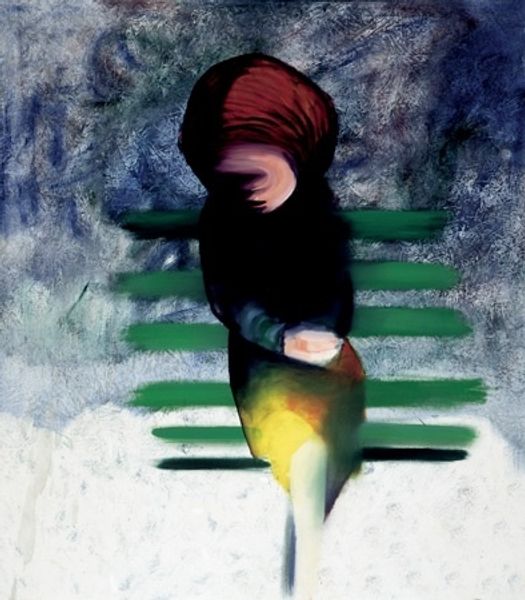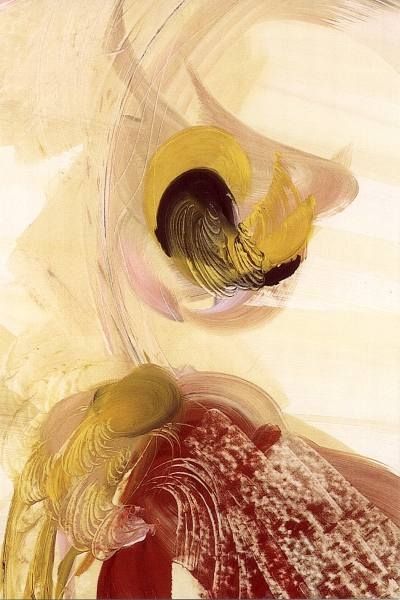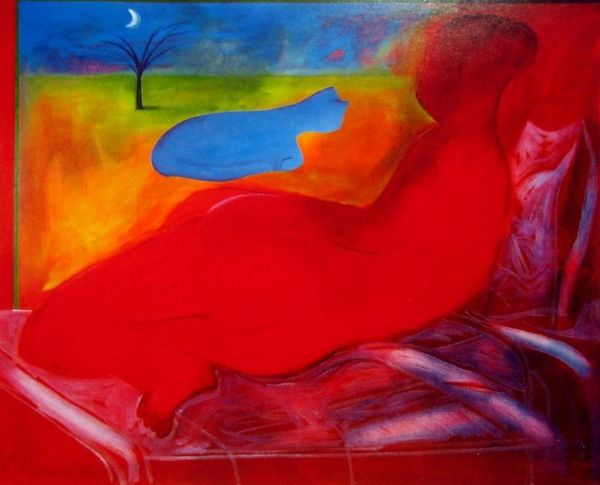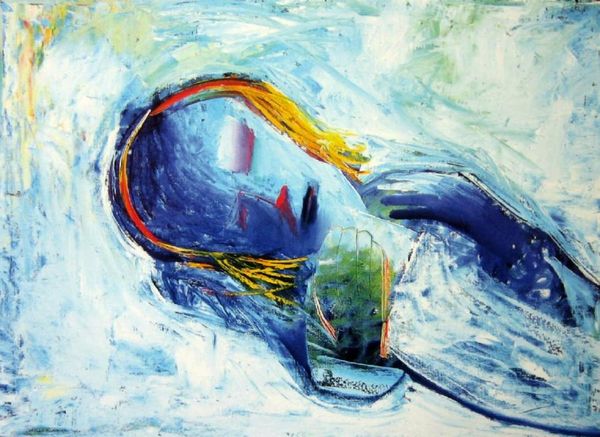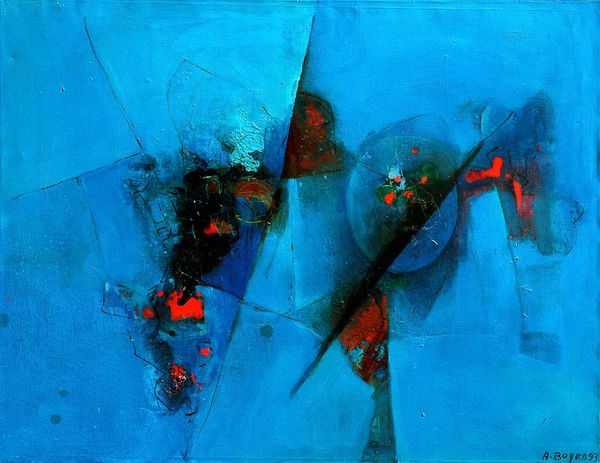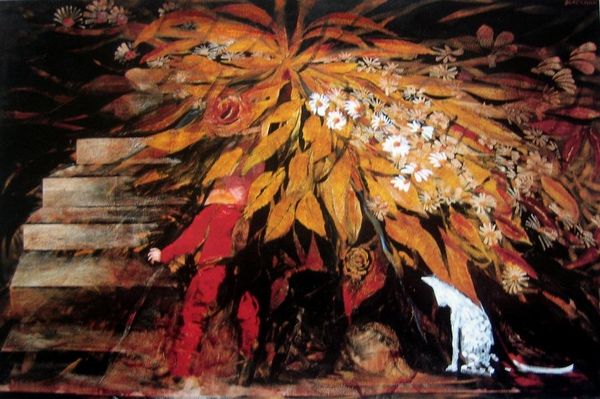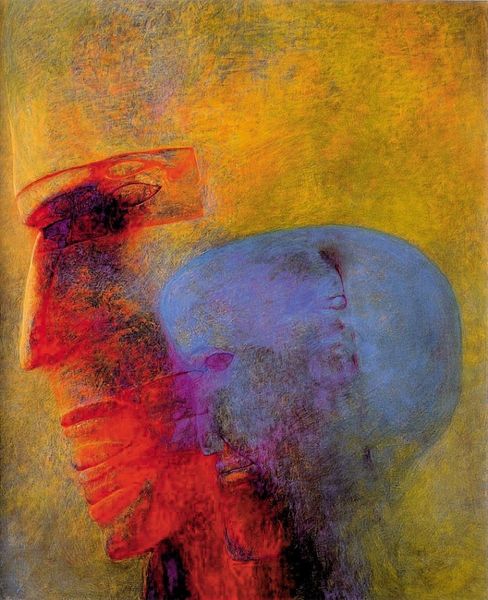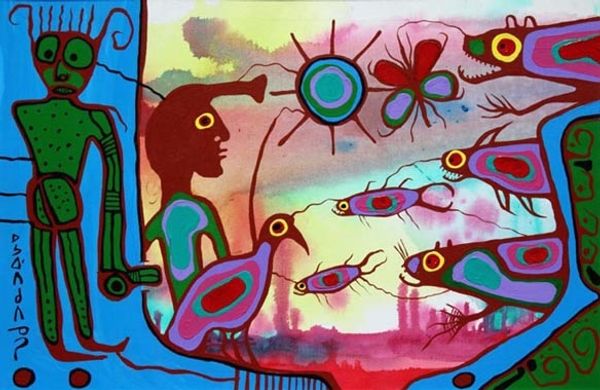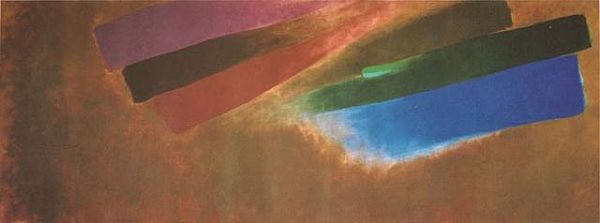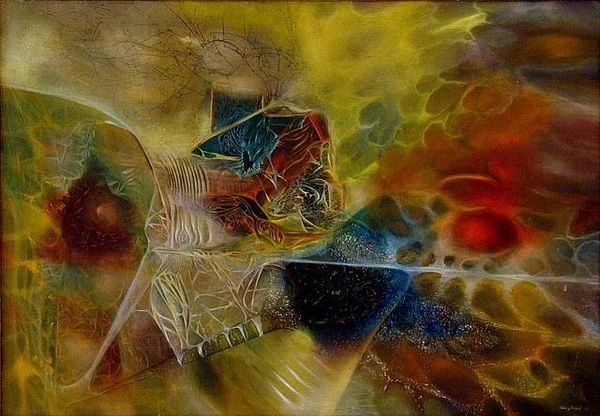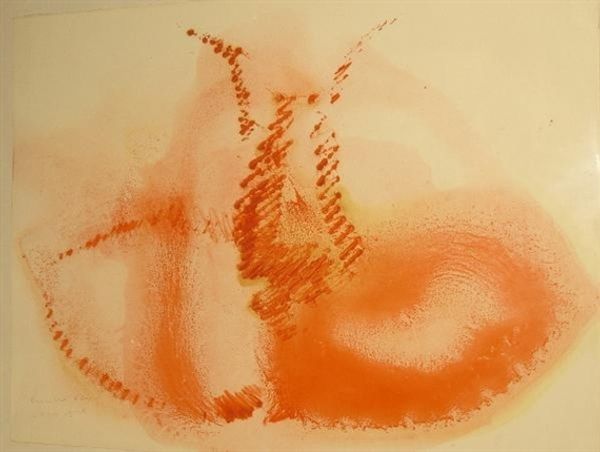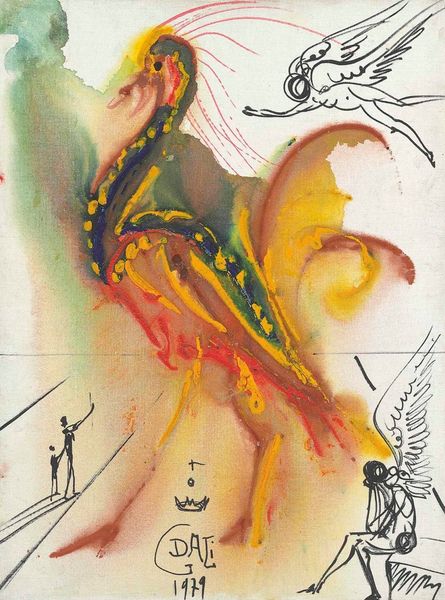
Copyright: Charles Blackman,Fair Use
Editor: So, here we have Charles Blackman's "Orpheus. The Harp of Love," painted in 1981 with oils and acrylic on canvas. The image feels dreamlike, almost like a memory fading. The harp’s form obscures the figure within it. How do you interpret this work? Curator: This painting powerfully evokes the Orpheus myth. But consider how Blackman frames the narrative: it’s not simply a retelling, but a commentary on the silencing of marginalized voices. The harp, usually an instrument of beauty and expression, here seems to cage Orpheus, perhaps representing the societal constraints placed on artists or those deemed 'other'. The blurring of the figure behind the strings hints at a loss of identity. Does this reading resonate with you, given the period in which it was created? Editor: I see what you mean about the silencing aspect. The fragmented face, seen through the bars of the harp, definitely adds to that feeling of being trapped or unseen. And the single flower held by the hand--is that a symbol of lost love or perhaps a fragile hope? Curator: Precisely. The flower becomes a potent symbol in this context. Is it a remembrance of Eurydice, snatched away and representing the losses inherent in life, or perhaps it reflects a persistent but delicate hope in the face of societal oppression? It challenges us to consider not just the individual tragedy of Orpheus, but the collective silencing of voices throughout history and even in our contemporary moment. Editor: This makes me rethink the entire piece! It’s not just a mythical scene, but a commentary on social structures and the struggle for recognition. Thanks for opening my eyes to that deeper layer. Curator: Indeed. And by engaging with the historical context and intersectional narratives woven into art, we gain a more profound understanding of both the artwork and the world around us.
Comments
No comments
Be the first to comment and join the conversation on the ultimate creative platform.
